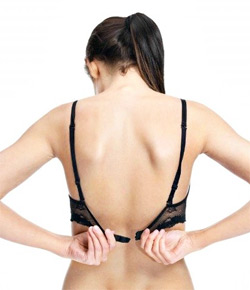There are four components of a fit bra– band, cups, straps, and bridge (the piece that links the cups together). To know if all these components are effectively met, Stand in front of a full-length mirror wearing your bra, and take a good look at how it fits, from all angles.

Up to 85% of women wear bras that don’t fit. That’s not good, because a lack of proper support for “the girls” can lead to poor posture, neck and back pain, and even nerve problems in your arms and shoulders.
Note that your breasts change size — a lot. Your weight, pregnancy, and menopause affect the size and type of support you need. Get measured to find the right fit.
Tips to Maintain a Healthy Bra Wardrobe
- Strike for Fit over Style: While shopping for a bra, go to a store with lots of different brands and try on one of each. Once you find the brands that work for you, then start searching for styles you think are cute. It doesn’t matter how beautiful a bra is, if it doesn’t fit and it’s not comfortable, you probably won’t wear it.
- Every women should own 4-7 bras and regularly rotate through all of them. It may seem excessive to own a bra for every day of the week, but the fact is, having a sufficient supply of bra options prevents overuse, deterioration of elastic and, ultimately, insufficient support.
- Choose a variety of styles that compliment your wardrobe. More than 90% of women rely on basic seamless options that don’t lift, shape or support breasts as well as those with seams.

- Even if you’re wearing the right size, bras wear out over time. Toss 3 of your oldest, least useful, or least comfortable bras, reassess your size, and replenish with 3 new bras. Take the time to get fitted again after your body undergoes significant change such as having a baby or experiencing a weight change of 10% or more.
- Watch the band level: To keep your breasts supported, the band must sit level or low on your back. When the band begins to rise on your back, your breasts will drop. A smaller band size will rest more firmly on your rib cage and remain in place.
- Avoid Tissue Spilling: Minimize soft tissue spilling over the back and sides of your bra by wearing a band that fits snugly around the less-fleshy part of the rib cage at the base of the bust line.
- Your underwire should fit firmly against your chest without any gaping. Let’s say, you’ve found the right band fit when you can lift your arms over your head without the underwire rising up.
- Do not throw your bras in the washing machine. Take the time to hand wash them, especially if they’re lacy. If you must use the machine, hook and stash the bras in a lingerie bag first and use the delicates/cold water setting.
How to Measure Your Bra Size?
- Determine your band size: While braless or wearing a non-padded bra, measure around the bottom of the band, directly under your bust. The measuring tape should be level and very snug. Round to the nearest whole number. If the number is even, add four inches. If it’s odd, add five. Your band size is the sum of this calculation.
- Take Your Bust Measurement: Wrap the measuring tape somewhat loosely around the fullest part of your chest (at nipple level). Round to the nearest whole number.
- Calculate Your Cup Size: Subtract your band size from your bust measurement. Example: 37 inches (bust) – 34 inches (band) = 3 inches. That’s a 34C.
Check if your Bra is the Right Fit
- Bend forward at the waist, then slip on the bra and hook it. This ensures your breasts are completely in the cups.
- Adjust the band. The back of the bra should be level with the front.
- Make sure the bra is not too loose. You should be able to slide only one finger underneath the band.
- Fix falling straps. First, tighten the band, then shorten the straps.
- Put on a close-fitting shirt over the bra. If the cups pucker or your breasts bulge, you’re not wearing the correct size.
- Look at yourself sideways in a mirror. Your breasts should sit midway between your shoulders and elbows. If not, you need a more supportive and better-fitting bra.
- If you need to go down a cup size for fit, go up one band size, and vice versa. For example, if a 34C is too big for you, move to a 36B.
- Choose a bra that fits perfectly when secured on the outermost hook. As the bra loosens over time, make the band taut by moving toward the tightest hook.
The right bra is worth the investment for it will serve you well.
Related links
- Top 10 Reasons Why You Need A Well-Fitted Bra
- The Basic Makeover for your Posture
- Choosing a Sports Bra That Fits